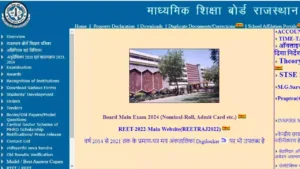Imagine a world where every child, regardless of background, has access to quality education. This is the ambitious vision behind Sarva Shiksha Abhiyan (SSA), a flagship program launched by the Government of India in 2001. Let’s delve into this initiative and explore how it’s transforming the educational landscape in India.
A Mission for Universal Elementary Education (UEE)
The 86th amendment to the Indian Constitution made education a fundamental right for children aged 6-14. SSA builds on this legal framework, aiming to achieve Universal Elementary Education (UEE) in a “mission mode.” This translates to ensuring all children within this age group have access to free and compulsory elementary education.
The program recognizes the importance of early education. By equipping children with foundational literacy and numeracy skills, SSA empowers them to become active participants in society. It fosters a generation that can think critically, solve problems, and contribute meaningfully to the nation’s development.
Building the Pillars of Education: Infrastructure and Access
One of the key focus areas of SSA is strengthening the infrastructure of elementary schools across the country. This includes:
- Opening new schools: In areas with limited access to education, SSA has played a crucial role in establishing new schools. This bridges the gap for children in remote villages and marginalized communities.
- Improving existing schools: The program allocates funds for renovation and expansion of existing schools. This ensures schools have adequate classrooms, proper sanitation facilities, and clean drinking water.
- Bridging the Teacher Gap: SSA tackles the challenge of teacher shortages by recruiting and training qualified teachers. Additionally, it supports initiatives for in-service training, helping existing teachers stay updated with the latest teaching methodologies.
Beyond infrastructure, SSA prioritizes making education accessible to all children. This includes:
- Free and compulsory education: The program ensures that there are no hidden costs associated with attending elementary school. Textbooks, uniforms, and basic learning materials are provided free of charge.
- Focus on girls’ education: SSA recognizes the importance of bridging the gender gap in education. Special initiatives are undertaken to encourage girls’ enrollment and completion of elementary education. This includes providing scholarships, transportation facilities, and separate toilets for girls in schools.
- Catering to diverse needs: The program acknowledges the diverse learning needs of children. It promotes inclusive education by providing support for children with disabilities, integrating them into mainstream classrooms with necessary adaptations.
Empowering Communities: Ownership and Participation
SSA goes beyond just building schools and providing resources. It emphasizes community ownership and participation in the education process. Here’s how:
- School Management Committees (SMCs): The program empowers local communities through the formation of School Management Committees (SMCs). These committees, consisting of parents, teachers, and local representatives, play a crucial role in monitoring school infrastructure, managing finances, and ensuring quality education.
- Social mobilization: SSA actively engages communities in promoting education. Awareness campaigns are conducted to highlight the importance of education and encourage parents to send their children to school.
By fostering a sense of ownership among communities, SSA ensures the program’s sustainability and long-term impact.
The Journey Ahead: Challenges and Looking Forward
While SSA has made significant strides towards achieving UEE, there are still challenges to overcome. These include:
- Ensuring quality education: While access to education has increased, ensuring quality education across all schools remains a challenge. Initiatives for teacher training, curriculum development, and regular monitoring are crucial in addressing this gap.
- Retention rates: Although enrollment rates have improved, ensuring children complete their elementary education requires further attention. Addressing issues like child labor and social barriers is essential to improve retention rates.
Looking forward, SSA continues to be a vital initiative for achieving educational equity in India. By addressing existing challenges and continuously innovating, the program holds the potential to empower future generations and pave the way for a brighter, more educated India.














